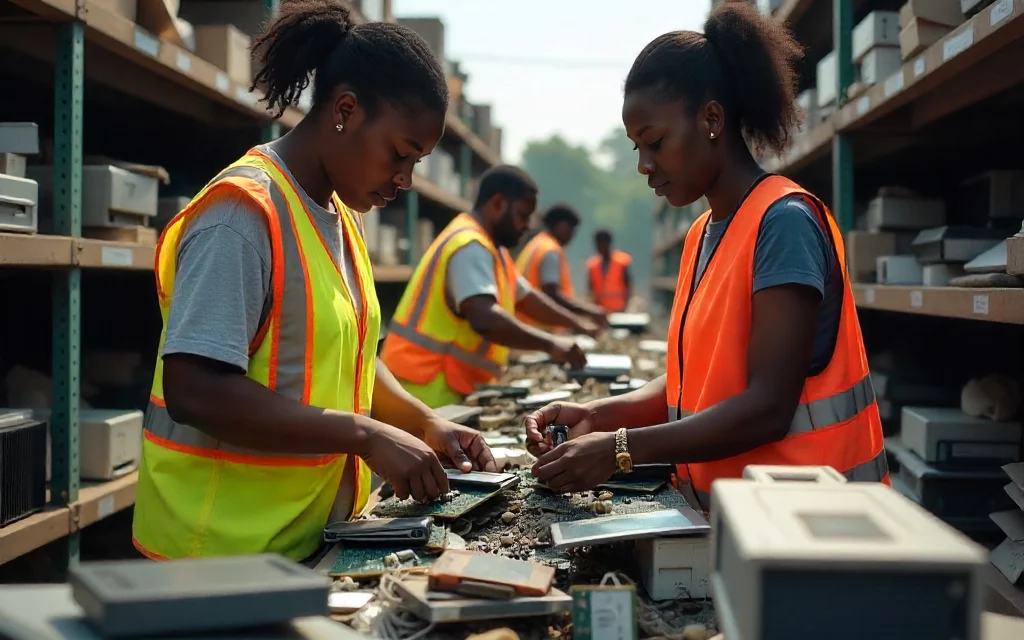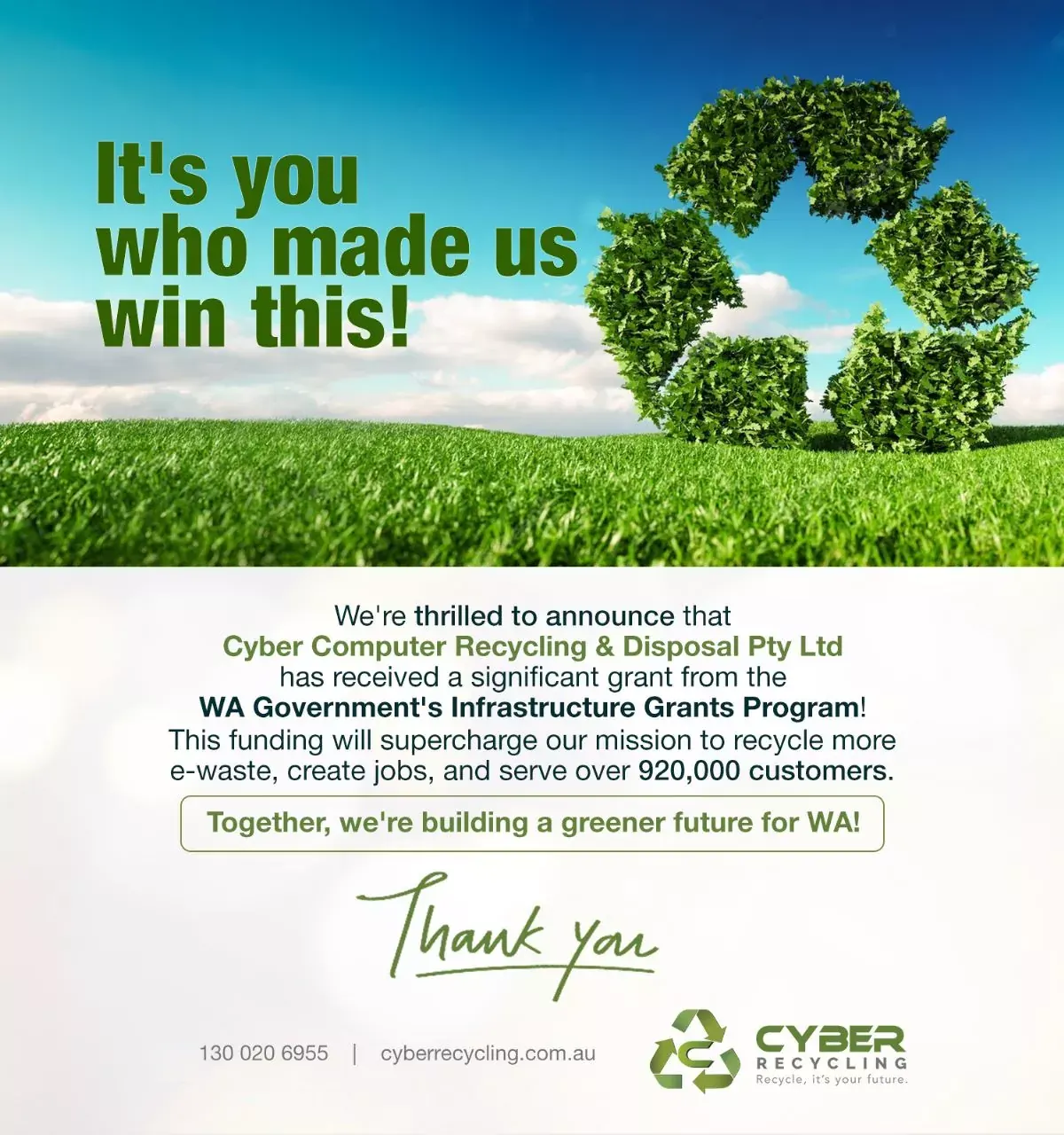Every once in a while, most of us have gone through our old smartphones, tangled chargers, and that laptop from five years ago and wondered, “What now?” The world has changed over the recent years, and upgrading electronics feels like a rite of passage now, but the aftermath can be overwhelming. Throwing them in the trash? That’s a no-go. Not only does it harm the environment, but it also wastes valuable resources. As we venture through 2025, with global e-waste generation projected to exceed 65 million metric tons, proper e waste recycling is more essential than we actually realise. In Australia, where each person generates about 20kg of e-waste annually, finding the best ways to handle old electronics can make a real difference.
The key to tackling this crisis is prioritising reuse over recycling, but when that’s not possible, turning to certified e-waste recycling companies makes sure materials like metals and plastics get a second life. Let’s explore how you can dispose responsibly, reduce your footprint, and maybe even pocket some cash along the way.
Understanding E-Waste and Its Growing Challenge
E-waste, short for electronic waste, includes everything from discarded phones and computers to printers and TVs. These items contain a mix of valuable materials like gold, copper, and rare earth metals, but also hazardous substances such as lead, mercury, and flame retardants. When mishandled, they leach into soil and water, posing risks to health and ecosystems.
In 2025, the world is on track to produce over 65 million metric tons of e-waste, up from 62 million in 2022, with projections hitting 82 million by 2030, yet the e waste recycling rates lag far behind, with only about 22% formally collected globally. Australia contributes significantly, generating around 500,000 tonnes yearly, which can be considered equivalent to the weight of about 100,000 elephants. By 2030, this could rise to 657,000 tonnes, driven by factors like built-in obsolescence in devices and rapid tech upgrades.
The increase is fueled by consumer demand and short product lifespans. Microsoft’s end-of-support for Windows 10 in October 2025 could render millions of PCs obsolete, potentially adding 12 million kilograms to landfills if not handled properly. This highlights why thoughtful disposal is crucial and how it is equally about conserving resources and curbing pollution.
The Environmental Impact of Improper Disposal
Tossing old electronics in the bin might seem convenient, but the consequences are far-reaching. E-waste in landfills releases toxic chemicals, contaminating groundwater and air. Batteries, common in devices, can cause fires during waste processing, as seen in recent Australian incidents where laptop batteries exploded in bins and trucks.
On the flip side, proper recycling conserves natural resources. Recycling 1 million laptops saves enough energy to power 3,500 U.S. homes for a year, while unrecycled e-waste represents billions in lost raw materials.
In Australia, only half of e-waste is recycled, and just 35% of valuable materials are recovered, leaving significant potential unused. This inefficiency drives greenhouse gas emissions and resource depletion, as mining new metals consumes far more energy than recycling.
Emerging trends such as AI data centres are creating new waste streams, sparking the urgency for action. Choosing responsible recycling methods helps reduce these impacts and supports a circular economy where materials are reused in production.
Best Methods to Dispose of Old Electronics
The hierarchy for disposal starts with reuse, then recycling. Here’s how to do it right in 2025.
Reuse and Repurpose
Before recycling, check if your device can still be reused. Extending its lifespan helps reduce the demand for new manufacturing.
- Donate to charities or schools: Working devices can still serve others. In 2024, various organisations refurbished items, with 50% of the 17.5 tonnes they collected being reused.
- Repurpose at home: Turn an old tablet into a digital photo frame or use a retired computer for basic tasks. DIY tutorials that are available all over the internet can assist you with it.
- Repair instead of replace: With Australia’s push for Right to Repair laws expanding beyond vehicles, fixing devices is easier. Local repair shops can handle common issues, cutting e-waste.
This approach is eco-friendly and cost-effective, helping you to squeeze out the maximum value from your tech.
Selling or Trading In
If your electronics are in good condition, why let them go for nothing?
- Online marketplaces: Sites like eBay or Facebook Marketplace are great for selling old computers. Price them fairly based on condition, and you might fetch $100-300 for a used laptop.
- Trade-in programs: Retailers like Apple or JB Hi-Fi offer credits toward new purchases. Microsoft provides free mail-back recycling for their devices if upgrading isn’t feasible.
Recycling Through Certified Programs
When reuse isn’t viable, recycling is key. Opt for a certified ewaste recycling company like Cyber Recycling to guarantee safe processing.
In Australia, e-waste recycling is streamlined via the National Television and Computer Recycling Scheme (NTCRS), which offers free drop-offs for TVs, computers, and accessories at over 500 points nationwide. It handles about 70,000 tonnes yearly, focusing on households and small businesses. Look for AS 5377-certified recyclers, the Australian standard for safe handling.
Tips for Safe and Effective Disposal
To make the process smooth:
- Wipe your data: Use factory resets or software like DBAN for hard drives. For peace of mind, certified companies handle this.
- Remove batteries: Dispose of them separately at dedicated points to prevent fires.
- Separate components: Chargers and cords might go to different recyclers.
- Check local rules: Bans on e-waste in landfills exist in states like Victoria and WA.
- Batch your items: Collect devices in batches and make a single drop-off to cut down trips.
Looking Ahead
Disposing of old electronics responsibly in 2025 boils down to reuse first, and if that isn’t an option, seek the help of a certified recycler like Cyber Recycling. By engaging with Australia’s e-waste recycling initiatives and ewaste recycling companies, you become part of the solution to a growing problem. Remember, every device diverted from landfill conserves resources and protects the planet. Next time you upgrade, think circular because your old tech could spark someone’s new beginning.


